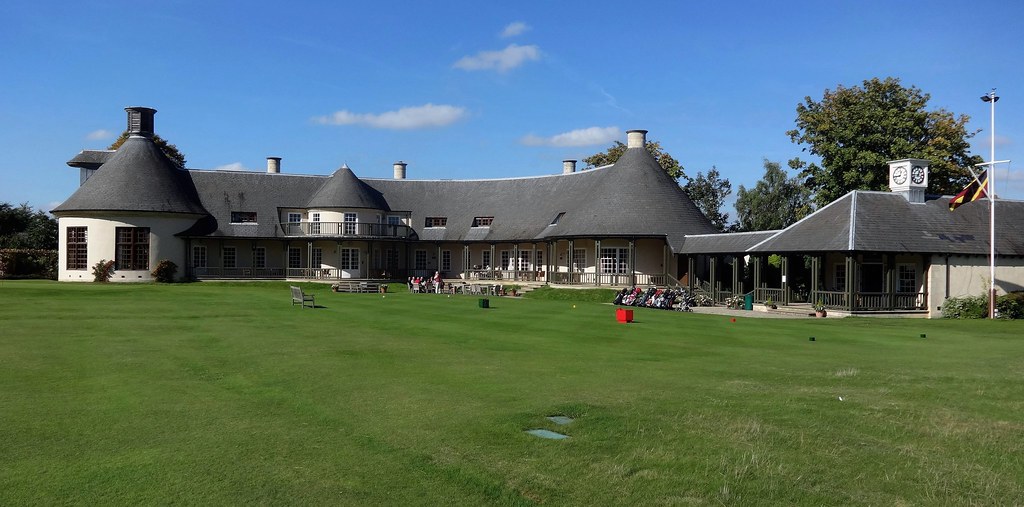
Located on age-old farming land in a moneyed area north of Leeds, Alwoodley retains these farming roots with extensive use of rig and furrow. Due to the prominence of Augusta National, Dr Alister Mackenzie is probably more famous than any Golden Age architect, however, it is often forgotten that along with Willie Park Jr, HS Colt and Herbert Fowler, Mackenzie was at the forefront of an inland architecture revolution which forever changed how courses were designed and built. While Alwoodley was not the first course to spring from this well of talent, Mackenzie's first effort is an early example being built in 1907. Not completely trusting to Mackenzie’s instincts, the club hired Colt to inspect the design and he visited Alwoodley twice. It isn’t known if Colt made any suggestions or if The Good Doctor acted on them. It is however, known that Mackenzie took advantage of poor weather during the winter of 1907/08 and with co-founder Arthur Sykes “were able to disregard their (the Committee) views entirely and make the course exactly as we wished.”
Map of the course.
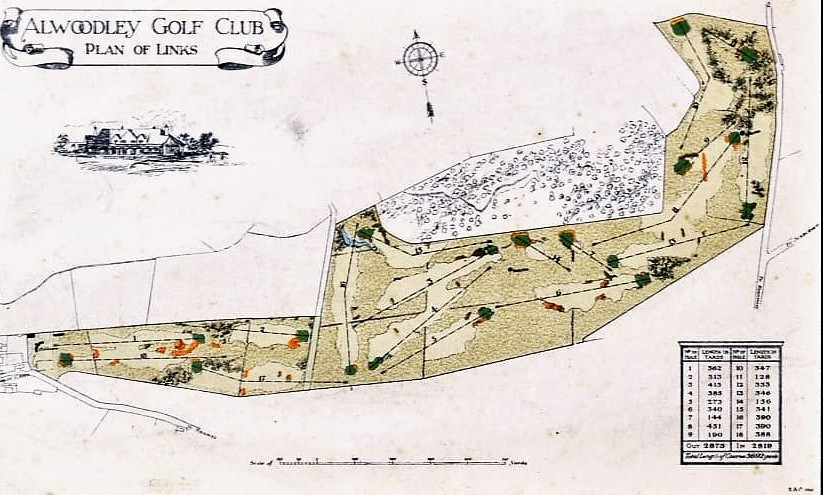
In many ways Mackenzie’s maiden design is born of his architectural convictions. When perusing the 13 General Principles layed out in his book, Golf Architecture, there are several tenets of design to which Alwoodley adheres, but never in a dogmatic manner. It is, however, disappointingly obvious that a major creed of Mackenzie's design theory is now hopelessly buried in lush rough and heather. The original width offered to the rabbit golfer no longer exists.
Who wouldn't want to have a go?

A blind drive short two-shotter gets the pulse racing on #2. The approach is tricky for those who can't pound their drive near the green.
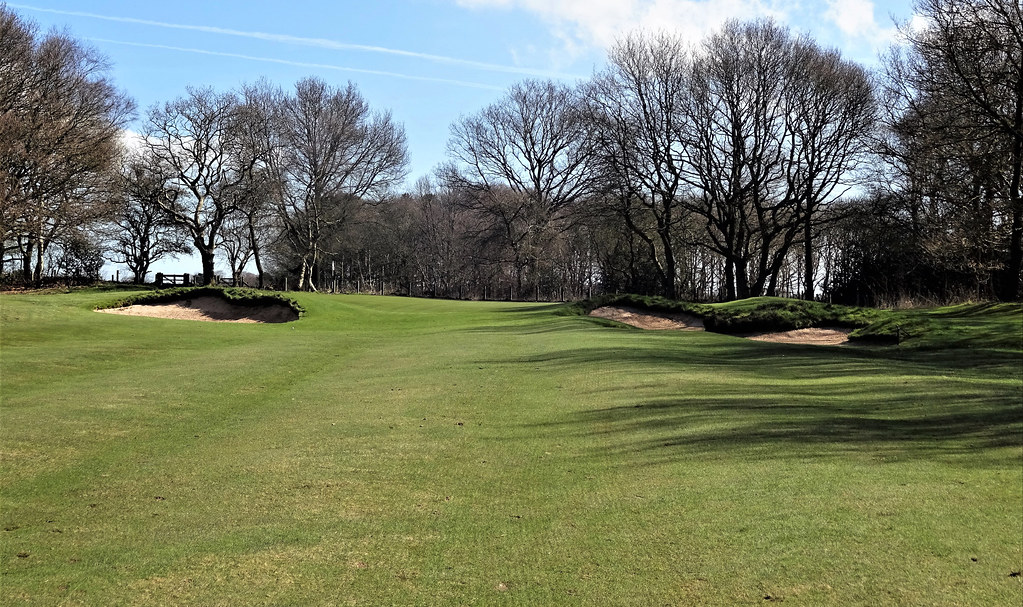
#3 is a flat par 5 moving slightly downhill. There is little trouble on the hole, but the green has a wonderful dip on the left side making hole locations on the precipice particularly difficult.
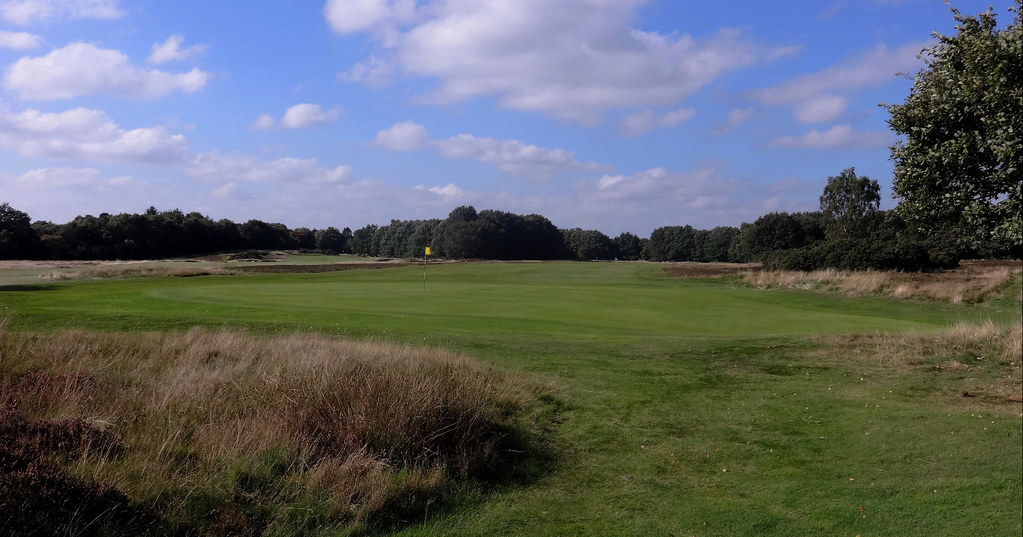
A testing par four with beautiful movement to the left; the 4th can often play tougher than the 3rd.
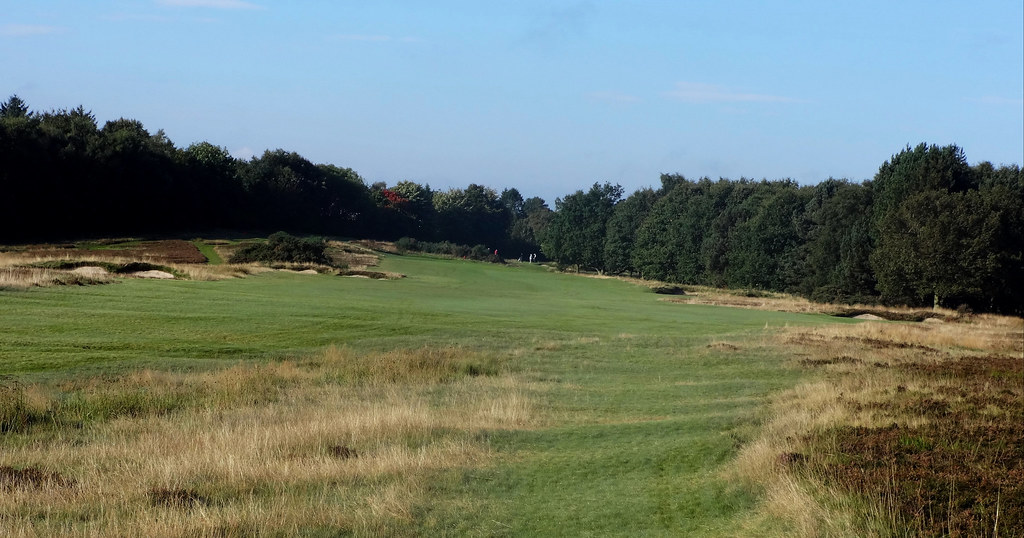
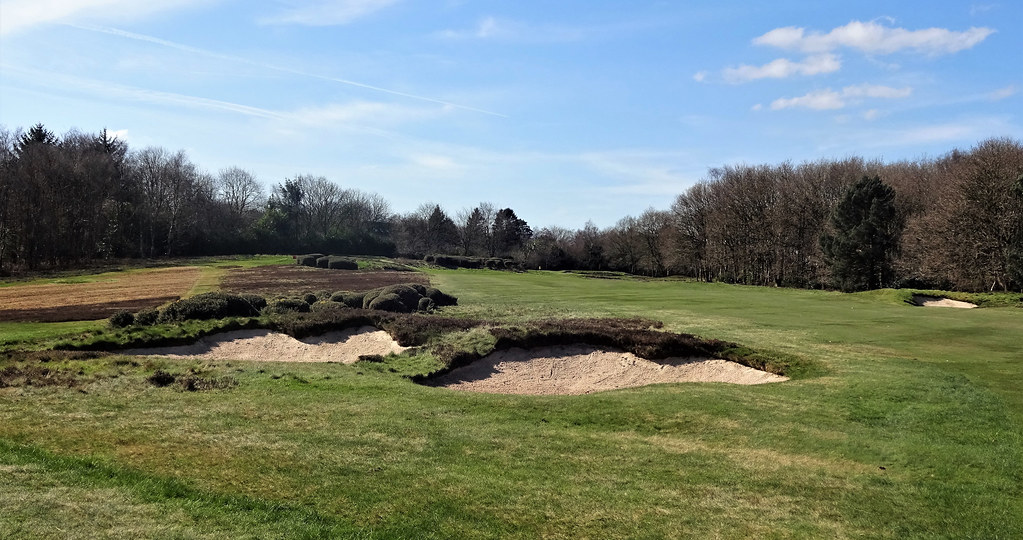
The lovely down n’ up fifth makes an about face on #4 and is one the few holes with any measurable elevation change. The rig and furrow lines are a feature which must be taken into account.
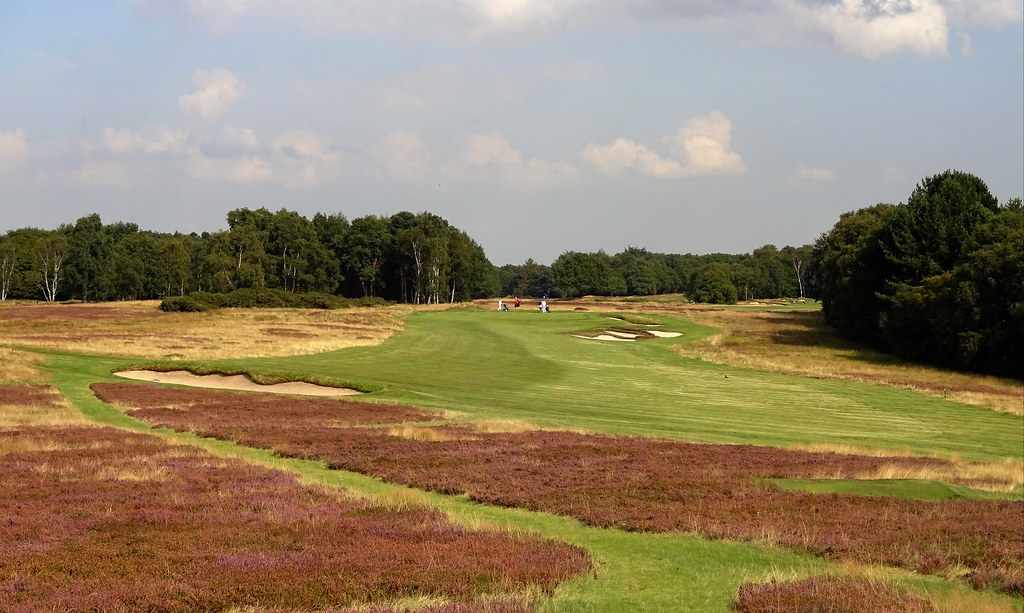
As can be seen below, the rig and furrow lines can run up and down or across a fairway.
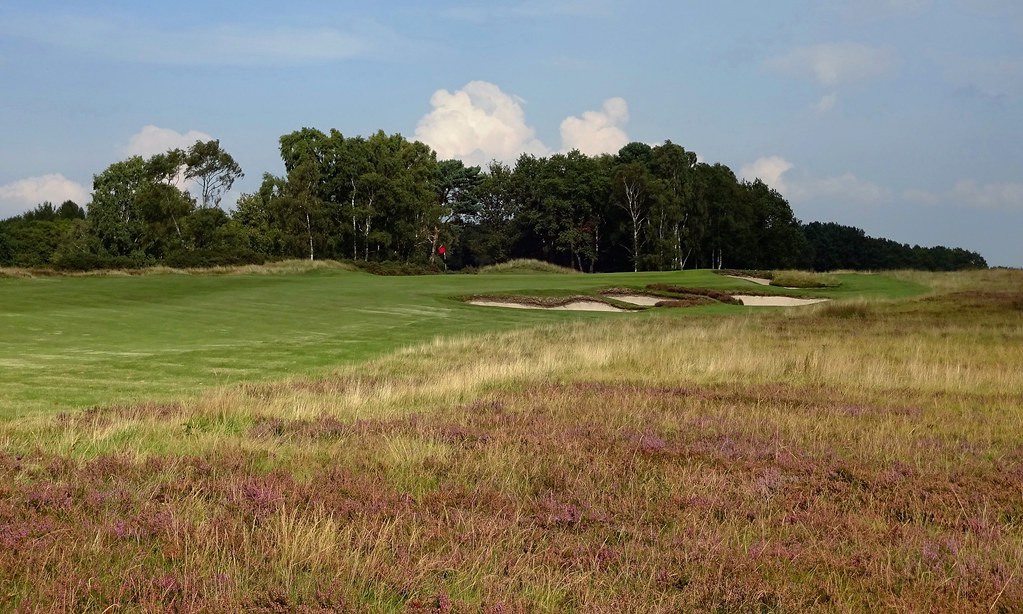
An old photo showing the bunkering/hummocks near the green.
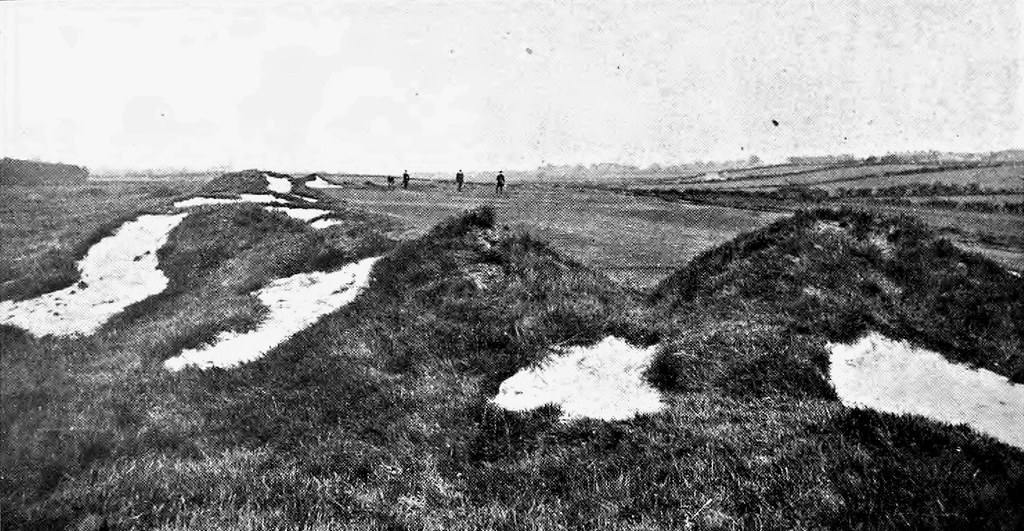
The 6th slopes right, but not to the degree of #5. The greens are generally quite large and often times missing one can result in a similar situation as off the fairways; lush, heavy rough. Combined with the canny slopes and numerous greenside bunkers, many greens are effectively smaller targets than they appear. This is especially the case since the project to relay the greens to USGA spec was completed for 1998 season.

There is a bit of a hitch in the routing after 6 as we have long walk to the 7th....I believe due to the green being moved further back at some point in Alwoodley's history of many changes. Delaying the introduction of a short hole until the 7th may seem less than ideal, but Mackenzie had to cope with a narrow neck in the property. He rather cleverly built two par threes bisecting the course, #s 7 & 14. Essentially, a cross-over is created between 8 & 15 without actually having the danger of crossing holes.

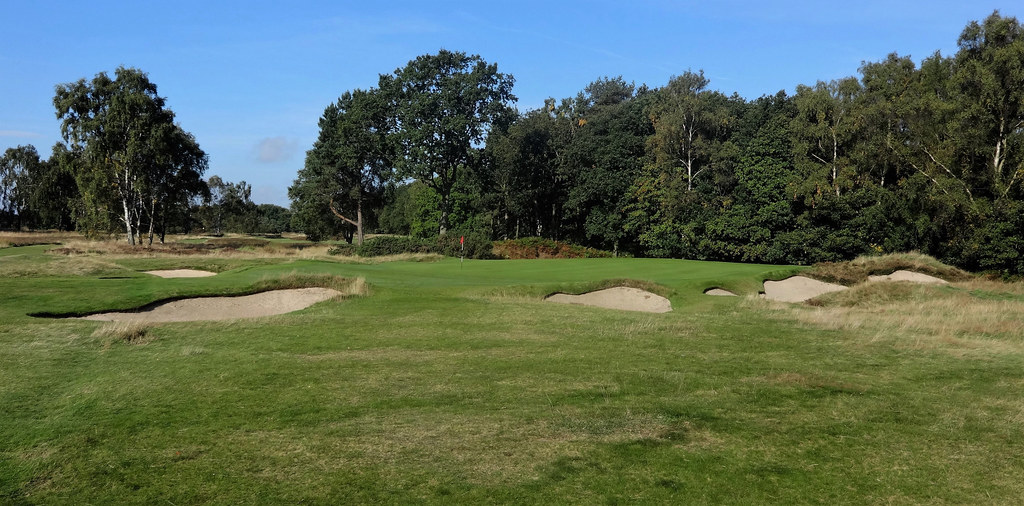
Legging hard left, the 8th uses "Wigton Cover" extremely well. There is a good deal of space right, but those wishing to reach the green in two will need to stay near the "Cover". To gain the best approach position down the left the cross bunker and rough must be taken into account. Often times this cross bunker won't be in play, but it does serve its purpose in a contrary wind.
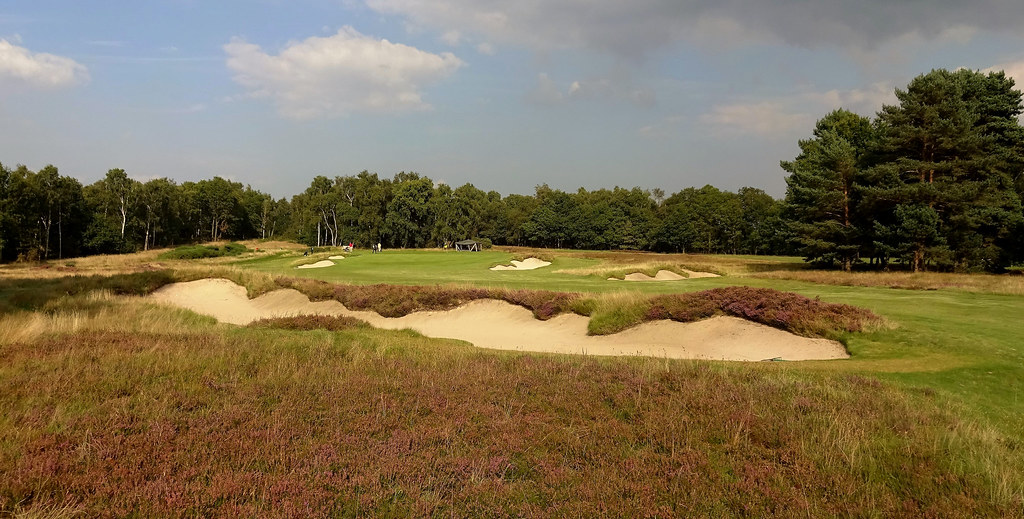
The Pound seats after two shots.
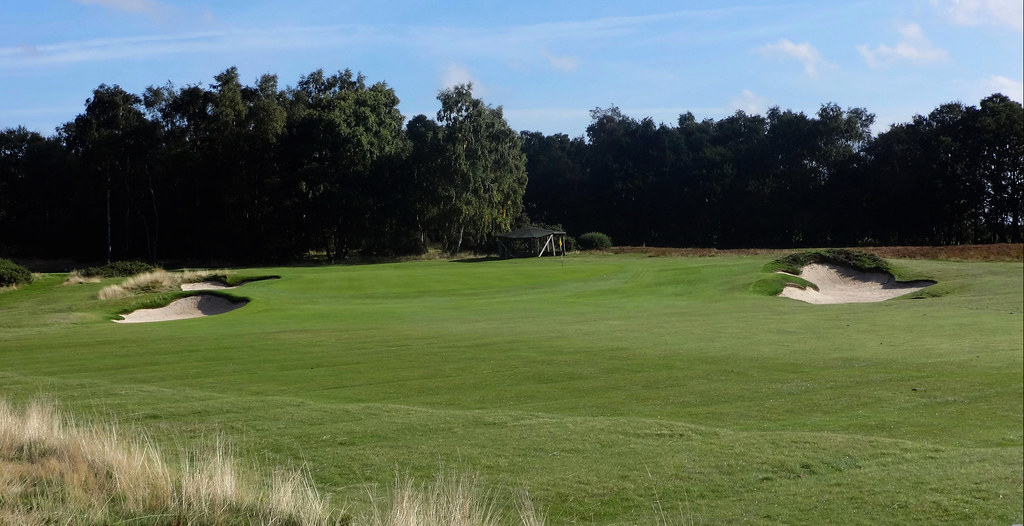
The side closes with a stern par 3 playing toward the wood. The following two holes are where the major changes of Alwoodley have taken place since the original course was opened. It is clear that Dr Mac planned for the changes if additional land could be leased. In the end, these changes were realized and a rather awkward corner of the course was dealt with fairly well. The changes to #s 10 and 11 are depicted in the upper right section of the plan.
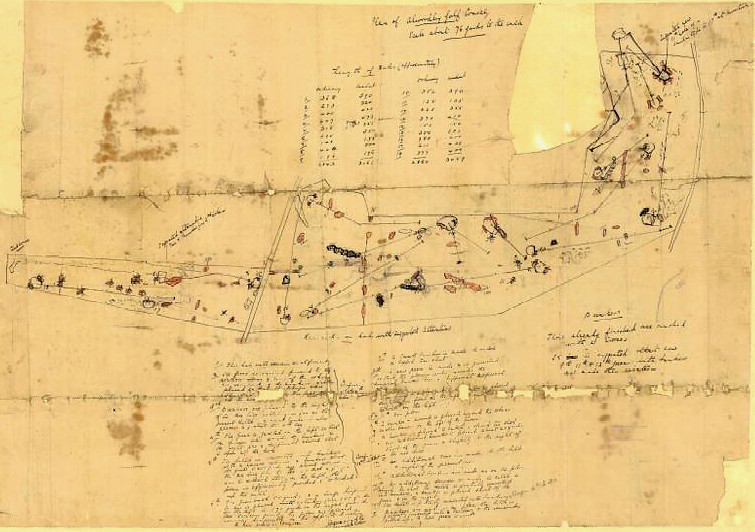
For those who know Augusta National well, the 10th will look familiar. In the same vein as the 8th, #10 swings severely left then cuts back on itself at the greensite. A very large drive will provide a view of the green for the dangerous long approach. If the green can't be seen, it is perhaps wiser to lay-up with a short or mid iron. There is nothing but trouble surrounding what may be the biggest sloping green on the course.

Due to the overbearing vegetation vastly reducing the recovery options, the Redan 11th doesn't work as well as it might. I remain a bit surprised the green wasn't kept on the higher ground to the right. Still, this is a good hole demanding an exacting tee shot. The hole was significantly altered recently. A new back left section for the green was created and several additional bunkers installed.
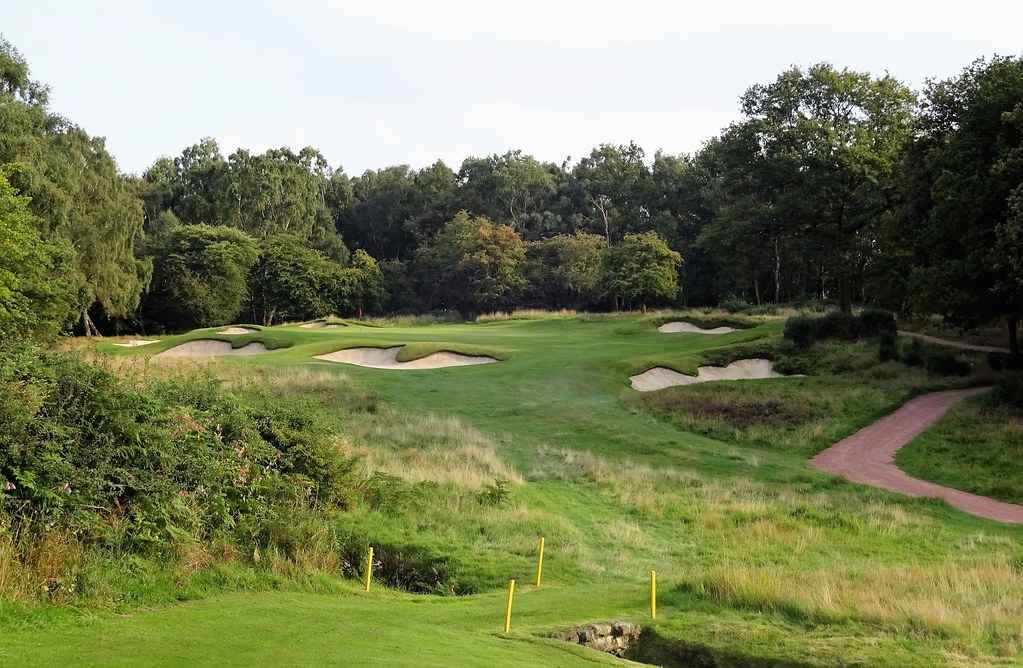
A longish walk through a cooling wood takes us to the fairly short par 4 12th. Once again there is evidence of rig and furrow in the fairway. The 13th (are there 13 bunkers on the hole?) is a medium length par 4 playing dead into the prevailing wind. Interestingly, there is a string of pearls bunkers just shy of the fairway. Unusual for Mackenzie, there is a blind rear left bunker which protects a nearby hole location.
The collection of par threes come in a span of eight holes between #s 7 and 14. The 14th may be the most interesting of the lot. It isn't dissimilar to the long approach from the right on #8. The lay of the land suggests a fade, but trouble lurks left for the pulled shot and right for the under-weighted cut. Despite appearances due to the excellent use of natural vegetation, the goodly amount of space available for a bounce in shot is well camoflauged.
"Wigton Cover" once again makes it mark down the right side of the 15th. Mackenzie again conceals the space fronting the green with clever bunker placement. Notice the right bunker limits the depth perception between the forward centreline and right greenside bunkers.
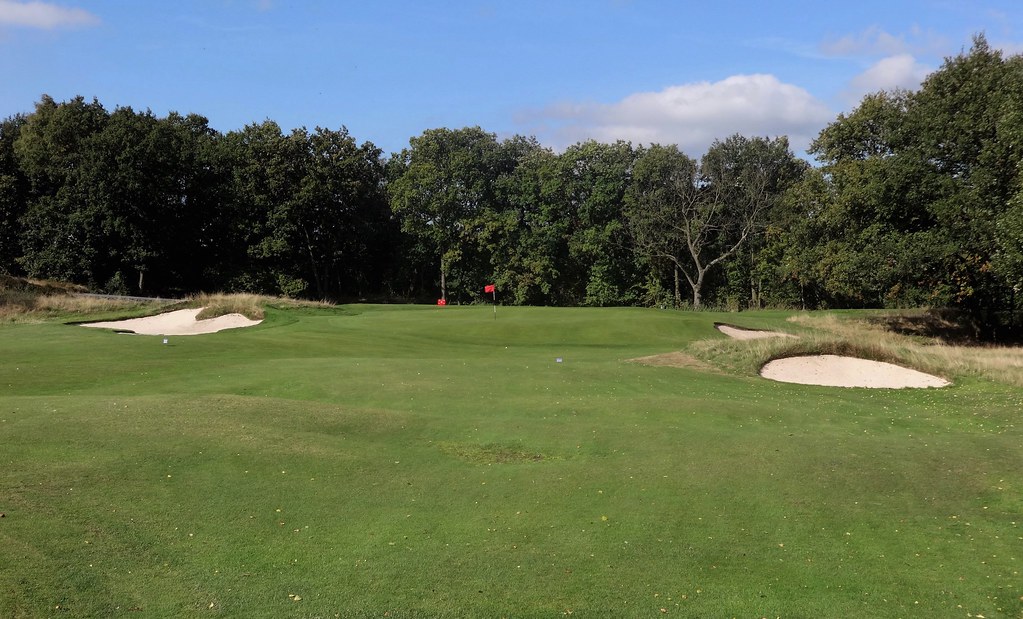
Unfortunately, in 2017 the club took the decision to flatten out the back left bowl of the green to create more hole locations when so called big events come to town.
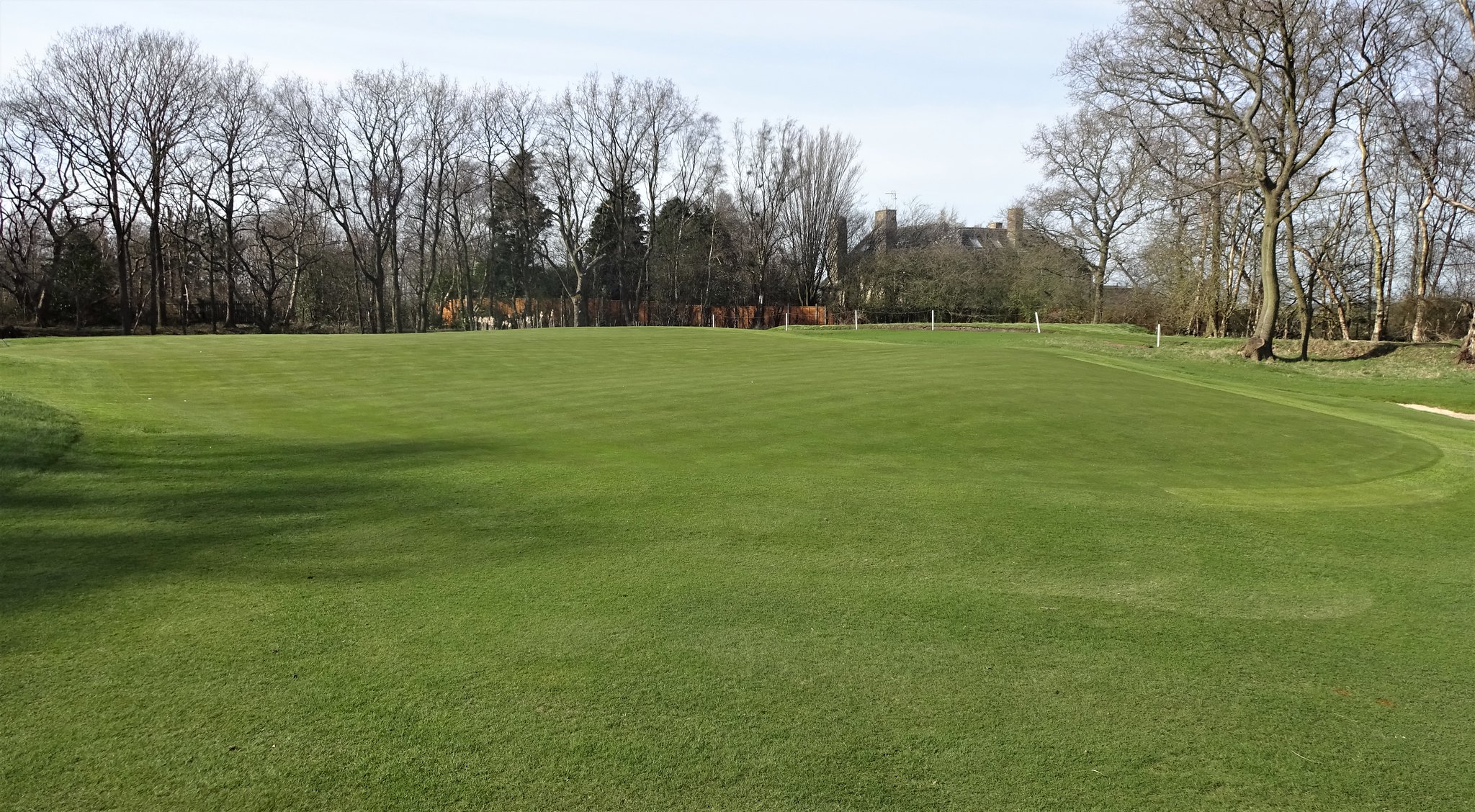
While blind, the 16th fairway is rather generous. It is best to stay right due to the slightly angled nature of the green. The clubhouse beckons for the final two holes. If it wasn't for the 400+ yards of length, the 17th could almost be bit of light relief with its sunken green. Approaching from the right isn't inviting because one senses there is a large conurbation of gorse to be mindful of.
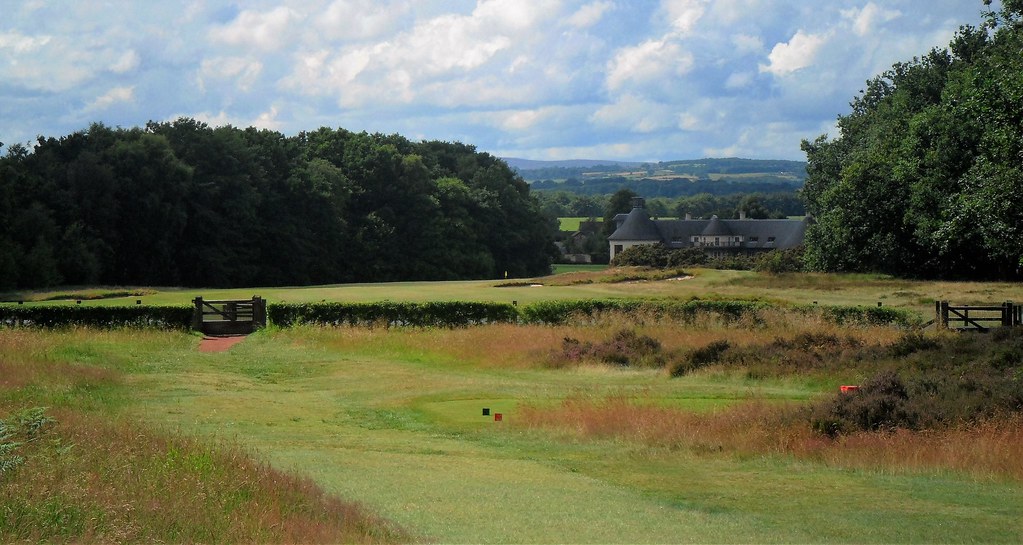
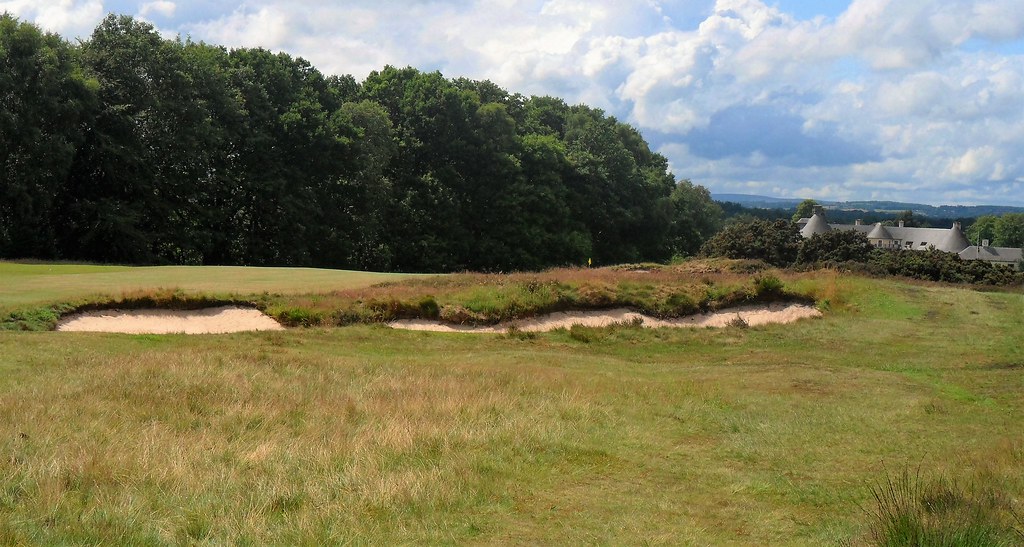
In a rather Fowlerish manner, the green is tucked under the fold of a hill and for Alwoodley, is unusually defenceless where bunkers are concerned. Although, I believe a bunker once existed back right of the green.
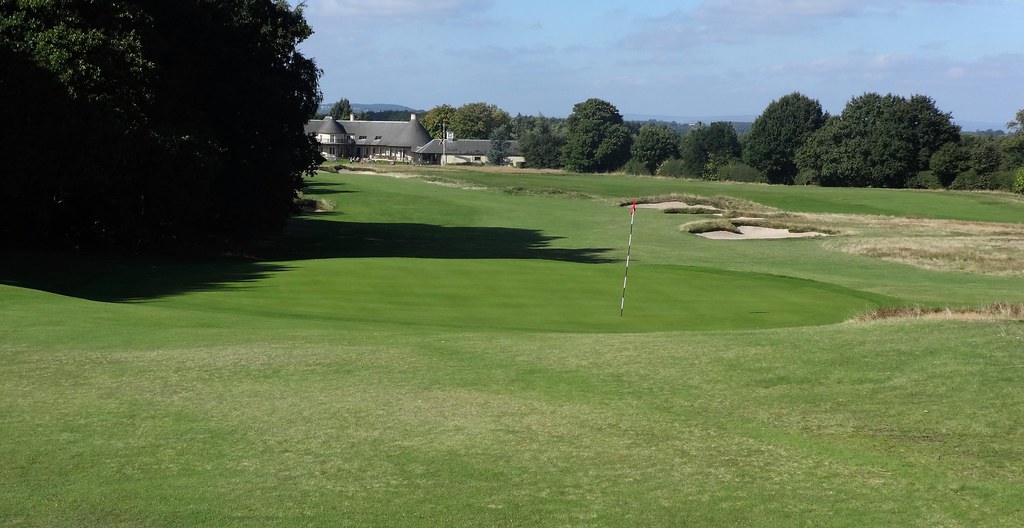
The second hitch in the magnificent routing is the long walk back to 18 tee. The view on 18 tee is just as beautiful as that on the veranda...but not so inviting. It seems everytime I return to Alwoodley the drive gets tighter and perhaps sand is overly emphasized for the shot. I am not convinced the bunkers down the left are needed and they highlight the debate between aesthetic VS penal bunkering. While these are not Mackenzie originals, this balancing act seemed to be something Dr Mac played with for most of his career.

Dr Mac on the tee.
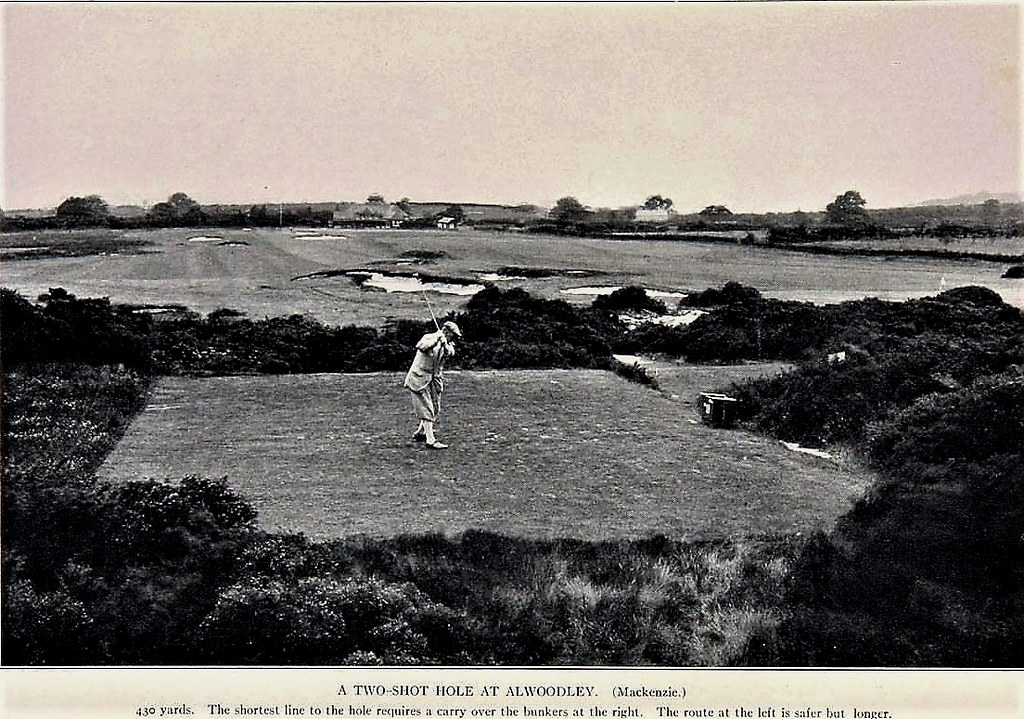
Directly in line with a flag is a dip making the golfer think a bit on how to tackle the shot.
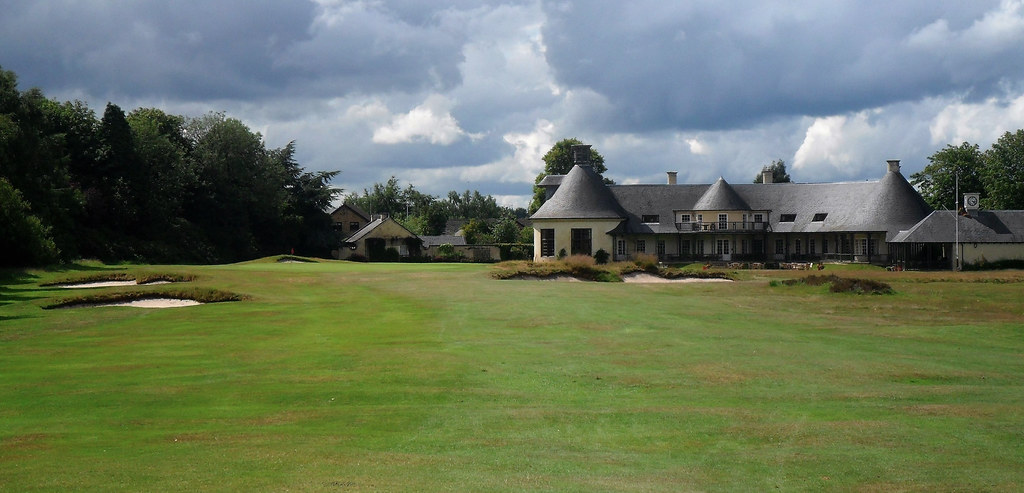
Because Alwoodley was Dr Mac's first effort, it is perhaps somewhat surprising that top to bottom it is a very well designed course. But we must remember that he was associated with the club for approximately 25 years and it may be assumed he tinkered with Alwoodley now and again. Perhaps due to this the course comes together in an exceptional manner in that it is a classic example of the whole being better than the sum of its parts. Not that there aren't exceptional holes, #s 5, 8 and 14 are very fine holes with the 8th being one of the best three shotters with which I am acquainted.
The ebb and flow of the design works well in offering birdie opportunities to create a highly admirable balance between challenge and playability. While not daring, the greens are interesting and where a bold feature is utilized it is done so with purpose.
There are few more inspiring views from a clubhouse veranda than Alwoodley’s and one can’t help but to want to stick a peg in the ground and begin the journey. Unusually, this inviting and beautiful sense of grandeur is present throughout the 18 holes.
On my visit in 2015 the situation of reduced playability due to severe punishment for missing the not overly wide fairways was a serious detriment to the joy of the game. Thankfully, the club has taken steps to cut back rough, heather and gorse and it is hoped these efforts will pay off. 2017
Ran's Review.
http://golfclubatlas.com/courses-by-country/england/alwoodley1/Ciao